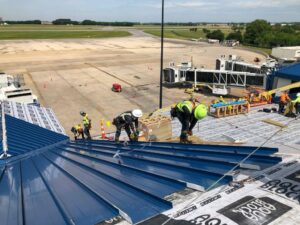Columbus Celebrates the Reopening of the Tombigbee Pedestrian Bridge
This Sunday afternoon, the vibrant community of Columbus is gearing up for a delightful celebration as the Tombigbee pedestrian bridge reopens its gates to walkers and nature lovers alike! A ribbon-cutting ceremony will take place, marking the end of a long wait after a barge accident about four years ago caused significant damage to this beloved bridge.
For those who may not remember, that incident happened when a barge broke loose from its tow, drifted down the old channel, and crashed into the bridge that has graced our city for nearly a century. The hard work put into repairing the bridge is finally complete, allowing locals and visitors to once again stroll along this scenic pathway. It’s more than just a bridge; it’s a cherished piece of our community’s history!
The Mix-Up with the Bridge Name
Interestingly, there has been some confusion surrounding the bridge’s name. Many locals refer to it as the 1928 Bridge, but in reality, it opened to traffic on May 15, 1927. Just goes to show how easy it can be to mix up dates! Exploring the origins of our local names can be quite fascinating. Names not only serve as markers but also preserve stories and memories that define our communities. Every road, creek, and city name has a tale to tell, and when these tales are forgotten or misinterpreted, a part of our heritage fades away.
Local Names and Their Origins
As part of this reopening celebration, let’s take a quick journey through some of the intriguing stories behind Columbus and its nearby areas. Many names here hold roots in the languages of the Native American tribes who inhabited the region long before us.
- Mississippi: Commonly believed to mean “Father of Waters,” its origin is debated. Some say it comes from Choctaw meaning “Place of Foreign Languages” or a phrase described by Peter Pitchlynn referring to a river “beyond any age.”
- Possum Town: This nickname for Columbus traces back to its early settler, Spirus Roach, whose peculiar family earned the place its name from the local Indigenous people.
- Tombigbee: Originally recorded as “The River of the Chicasa,” it later derived from the Choctaw word “Elome-gabee,” meaning “box maker,” which commemorates a local artisan.
Many may not know that the Military Road, used now for everyday travel, was built after Andrew Jackson—though it’s a fun trivia fact that there’s no record of him physically traveling on the portion around Columbus!
Names that Tell a Story
Even the smaller water bodies and creeks around have stories woven into their names. For instance, Noxubee River might come from a Choctaw phrase meaning “strong smelling,” likely alluding to the river’s sometimes fishy odor. And Coal Fire Creek, originally known as Cold Fire Creek, derived its name from early settlers who described the chilly waters as feeling like fire when crossing!
It’s funny how names evolve or get misinterpreted over time. For example, Wolfe Road was initially named after the numerous wolves that thrived in the area. The presence of these creatures made it challenging for early settlers to raise livestock, giving Wolfe Road its distinct historical significance.
Let’s Keep the Conversation Going!
As we gather to celebrate the opening of the Tombigbee pedestrian bridge, let’s also reflect on the stories behind our local names. They’re reminders of our past and hold a special place in the tapestry of our community.







